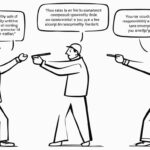In meetings, there is often a designated person responsible for taking notes, known by various titles. Some common terms for a person who takes minutes in a meeting are minute-taker, stenographer, rapporteur, notetaker, recorder, secretary, scribe, transcriptionist, amanuensis, stand-in, and copyist. The minute-taker is responsible for documenting the participants, content, and decisions made during the meeting. A stenographer is typically involved in court sessions to transcribe dictation. A rapporteur is someone chosen by an organization to prepare reports of meetings or investigate and report on a problem. These terms serve to describe the important role of the person who keeps track of the discussions and decisions in a meeting, ensuring clarity and accountability.
What Are Meeting Minutes?
Meeting minutes serve as an official written record of a meeting, capturing the discussions, decisions, task assignments, and deadlines. They hold immense value as an official written record that reflects the essence of the meeting. The meeting minutes act as a tool for accountability, providing a clear reference for task assignments and ensuring that decisions made are documented and tracked.
Not only do meeting minutes serve as a reference point for future discussions and actions, but they also have the potential to be legal documents in certain organizational contexts. A carefully documented set of minutes can be of utmost importance when referring to past decisions or discussions that may have legal implications.
Aside from their legal significance, meeting minutes are incredibly valuable in a practical sense. They allow for a thorough assessment of meeting efficiency and effectiveness, enabling participants to gauge the progress of tasks assigned and track deadlines. For those who were unable to attend the meeting, the minutes offer an overview of the proceedings and provide insight into the discussions and decisions made.
When preparing meeting minutes, it’s crucial to ensure clarity and conciseness. Key details such as the date, time, participant names, agenda items, discussions, and decisions should be accurately and comprehensively recorded.
Meeting minutes act as a reliable reference point for the past, provide a framework for accountability in the present, and contribute to the smooth functioning of future meetings. They are a vital component of effective communication and collaboration within organizations.
How to Take Meeting Minutes?
Preparing ahead is key to effectively taking meeting minutes. Before the meeting, familiarize yourself with the agenda and identify important items that may require decisions or actions.
During the meeting, it’s crucial to maintain objectivity and avoid personal interpretations or asides. Stay focused on the main discussion points and key decisions, ensuring that participants’ names are used when recording who said what to maintain accountability and facilitate follow-up.
Clarity is essential, so don’t hesitate to ask for clarification if any point is unclear. Additionally, be sure to record action items comprehensively, including task details, assignee, and deadline.
After the meeting concludes, take the time to review and edit the minutes while the discussion is still fresh in your mind. Pay attention to clarity, grammar, and punctuation. Aim for a quick turnaround in finalizing and distributing the minutes, as promptness is crucial in maintaining productivity.
Once the minutes are finalized, they may require approval from the meeting chair or facilitator. It is of utmost importance to maintain confidentiality when taking and sharing minutes, especially when sensitive information is discussed, ensuring that confidentiality is upheld throughout the process.
Source Links
- https://wordselector.com/what-do-you-call-a-person-who-takes-minutes-in-a-meeting/
- https://www.mentimeter.com/blog/great-leadership/meeting-minutes
- https://en.wikipedia.org/wiki/Minutes









